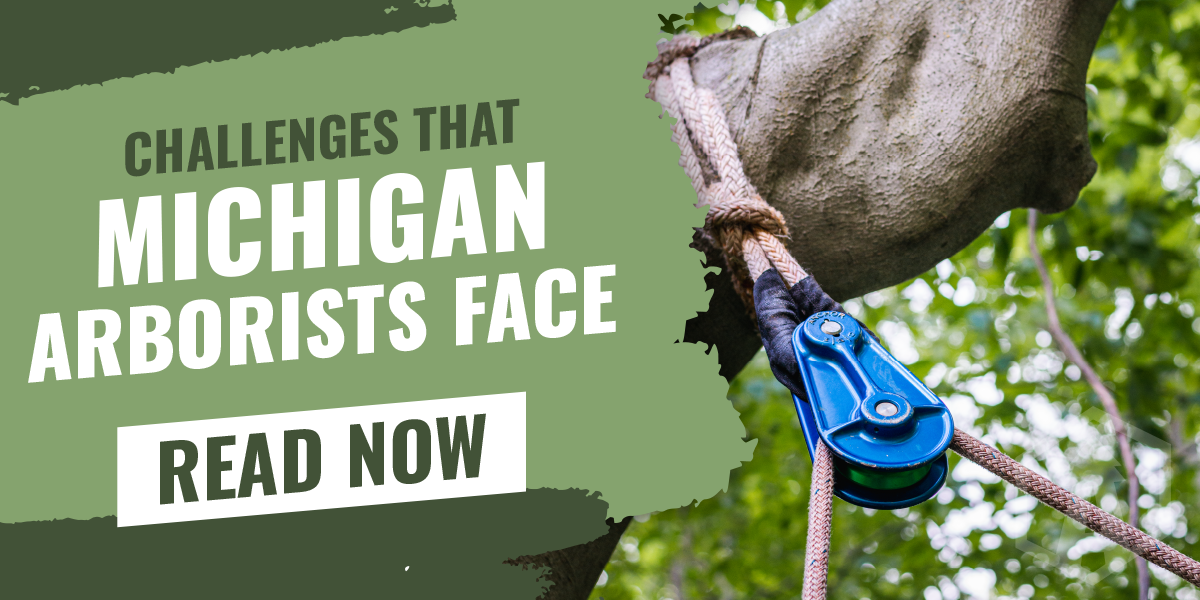
Challenges that Michigan Arborists Face
Being an arborist is a very rewarding profession that involves the care and maintenance of trees. It’s so much more than showing up and removing a tree! Of course tree removals are part of the job, but removals should be done when the tree is dead or compromised. Arborists play a vital role in preserving the natural environment and enhancing the beauty of urban landscapes to the best of our abilities. Our industry is not without its challenges. The challenges we may face can vary significantly depending on what state you live in, but today we're going to explore some of the hurdles we face here in Michigan and the Midwest.
Unpredictable Weather Conditions
One of the primary hurdles Michigan arborists face is the region's unpredictable weather conditions. Michigan's proximity to the Great Lakes results in a diverse yet erratic climate. Arising from this are abrupt changes from warm winter days to freezing temperatures and even summer days that feel like autumn. Arborists must be adaptable and quick to adjust their work approach accordingly.
The extreme cold poses physical demands on arborists, requiring careful consideration of appropriate clothing layers. Determining how to dress becomes a significant challenge, as they must find a balance between protection from the cold and ensuring freedom of movement. Venturing out on frigid days is often indicated by nose hairs instantly stiffening upon inhalation. In such situations, arborists may choose to stay home, prioritizing personal safety over a day's pay.
Conversely, hot summer days are more preferable for arborists, as they can work comfortably without the need for additional layers. The freedom of movement and the vibrant green surroundings make these conditions ideal for their tasks.
Tree Species Diversity
Another challenge lies in the diverse range of tree species in Michigan such as oaks, maples, pines, birch, and more. Local arborists must possess a comprehensive understanding of each tree's unique characteristics, growth patterns, and specific requirements. This knowledge is essential for successfully conducting pruning and removal operations. Factors like hinge capability, which affects control when hinging a limb sideways or felling, and the appropriate timing for pruning based on the tree species and season, all demand careful consideration.
Urban and Rural Landscape Maintenance
Arborists in Michigan and the Midwest encounter different challenges based on the landscape they work in, be it urban or rural areas. Urban environments pose confined spaces and numerous obstacles like buildings, utility lines, pedestrians, and windows. These necessitate meticulous planning and creative rigging techniques for removals, sometimes even requiring the assistance of cranes. The ability to navigate such challenging situations and apply new rigging techniques contributes to the arborists' expertise and artistic skill.
On the other hand, rural areas present their own distinct challenges, often characterized by rough terrains. Walking uphill or downhill with brush or logs becomes an arduous task, especially when machinery is not available. However, arborists in rural settings often have the advantage of being able to perform tree removals without extensive rigging, and in some cases, they can bring down large trees more freely.
Overall, arborists in Michigan and the Midwest overcome various obstacles to carry out their rewarding profession. They must adapt to unpredictable weather, possess extensive knowledge of tree species, and navigate the distinct challenges of both urban and rural landscapes. By doing so, they contribute to preserving the natural environment and enhancing the aesthetic appeal of the areas they serve.
What are the biggest challenge you face as an arborist?

Leave a comment